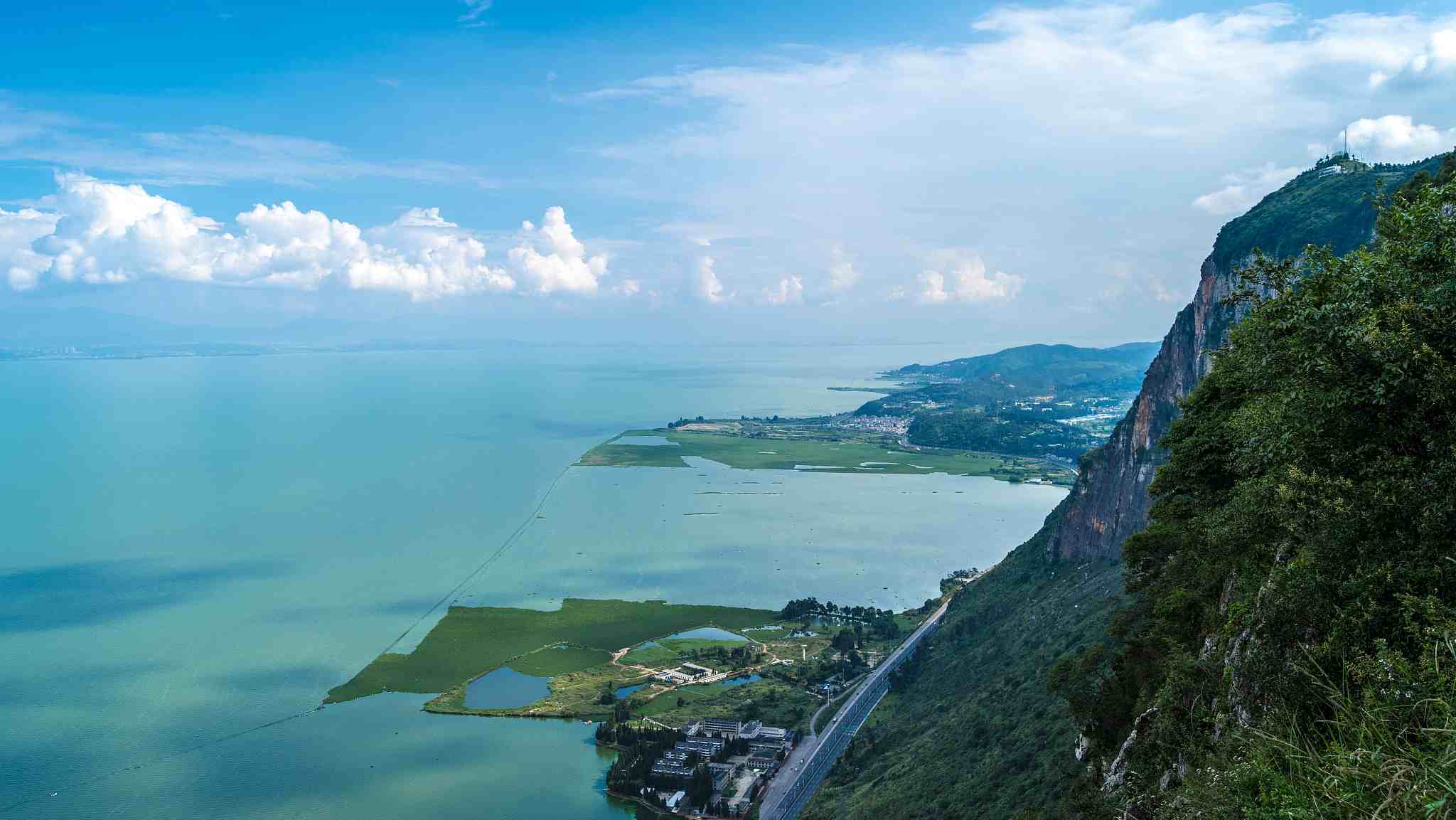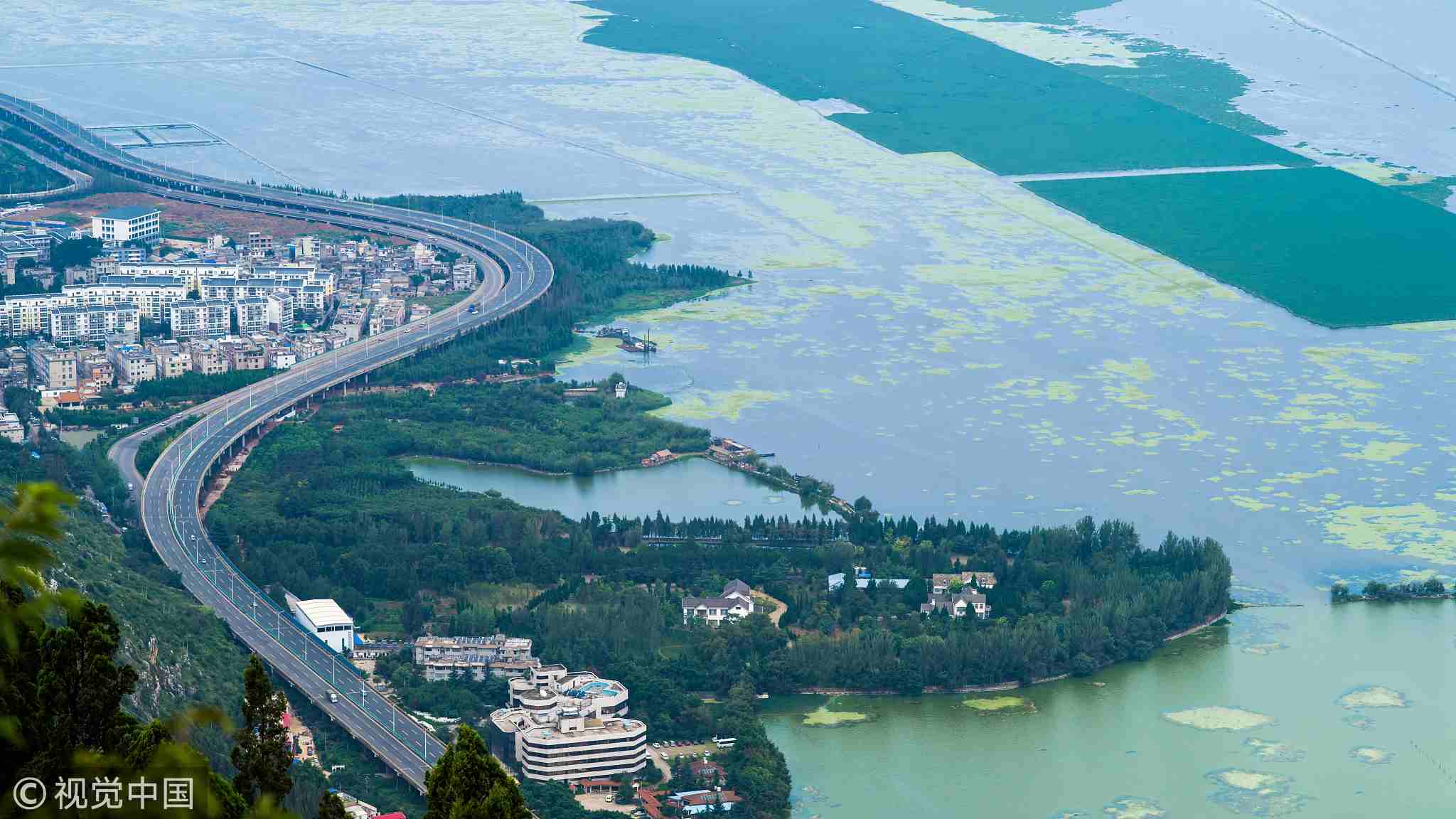
Nature
15:04, 22-Jul-2018
How we saved the 'sparkling pearl' in China’s Yunnan Province
Updated
14:37, 25-Jul-2018
By Gao Yun, Pan Zhaoyi

Sprawling urbanization, growing population, increased industrial and agricultural activities had made Dianchi Lake, the "sparkling pearl embedded in highland" located in Kunming, capital of southwest China’s Yunnan Province, into a serious-polluted disaster since the 1970s.
Untreated urban sewage, industrial wastewater, and domestic solid waste, as well as the agricultural runoff, were discharged into the lake.
It was once deemed as one of the most severely polluted lakes in China in the 1990s with its water quality falling to “inferior to Grade V,” the worst in the country’s water quality grading system.
However, after 20 years, things changed.

VCG Photo
VCG Photo
By the end of 2016, the water and ecological environment in the river basin has improved significantly, and the water quality has stabilized and improved, assessed by the Chinese Academy of Engineering.
It was also the first time in that year the water was clean enough to be used for agriculture since 1985, according to Xinhua News Agency. The proportion of monitored surface water reaching Grade III or above rose by 1.8 percentage points to 67.8 percent in 2016, surpassing the 66.5-percent target.
According to the data released by the local government, biodiversity has seen an upward shift with many new species emerging. The endangered birds like Plegadis falcinellus and Spatula querquedula showed up again.
So what did we do?
As the largest freshwater lake on the Yunnan-Guizhou Plateau, Dianchi Lake, covering 309.5 square kilometers with a shoreline stretching for 163 kilometers, acts as a backbone of the socio-economic development of Kunming city, and a major source for Kunming’s industrial and agricultural water use.

Dianchi Lake, the "sparkling pearl embedded in highland" located in Kunming, capital of southwest China’s Yunnan Province. /VCG Photo
Dianchi Lake, the "sparkling pearl embedded in highland" located in Kunming, capital of southwest China’s Yunnan Province. /VCG Photo
After realizing the heavy pollution has already threatened people’s living conditions, the government started to act out by building 17 wastewater storage tanks, 22 sewage treatment plants and constructing a drainage system covering 5722 km in the citywide, as well as a sewage collection and treatment facility supporting 885 villages in the rural area.
In the past two decades, hundreds of square meters of barren hill have been turned into lush forest, land for houses had been restored to the wetlands accommodating the animals and plants, even the size of the lake has been expanded to 11.51 square kilometers.
The whole area has seen a great improvement in its water quality and ecosystem, restoring its splendor from the worst grade in China’s water quality grading system.
It turned out the efforts have finally paid off.

SITEMAP
Copyright © 2018 CGTN. Beijing ICP prepared NO.16065310-3
Copyright © 2018 CGTN. Beijing ICP prepared NO.16065310-3